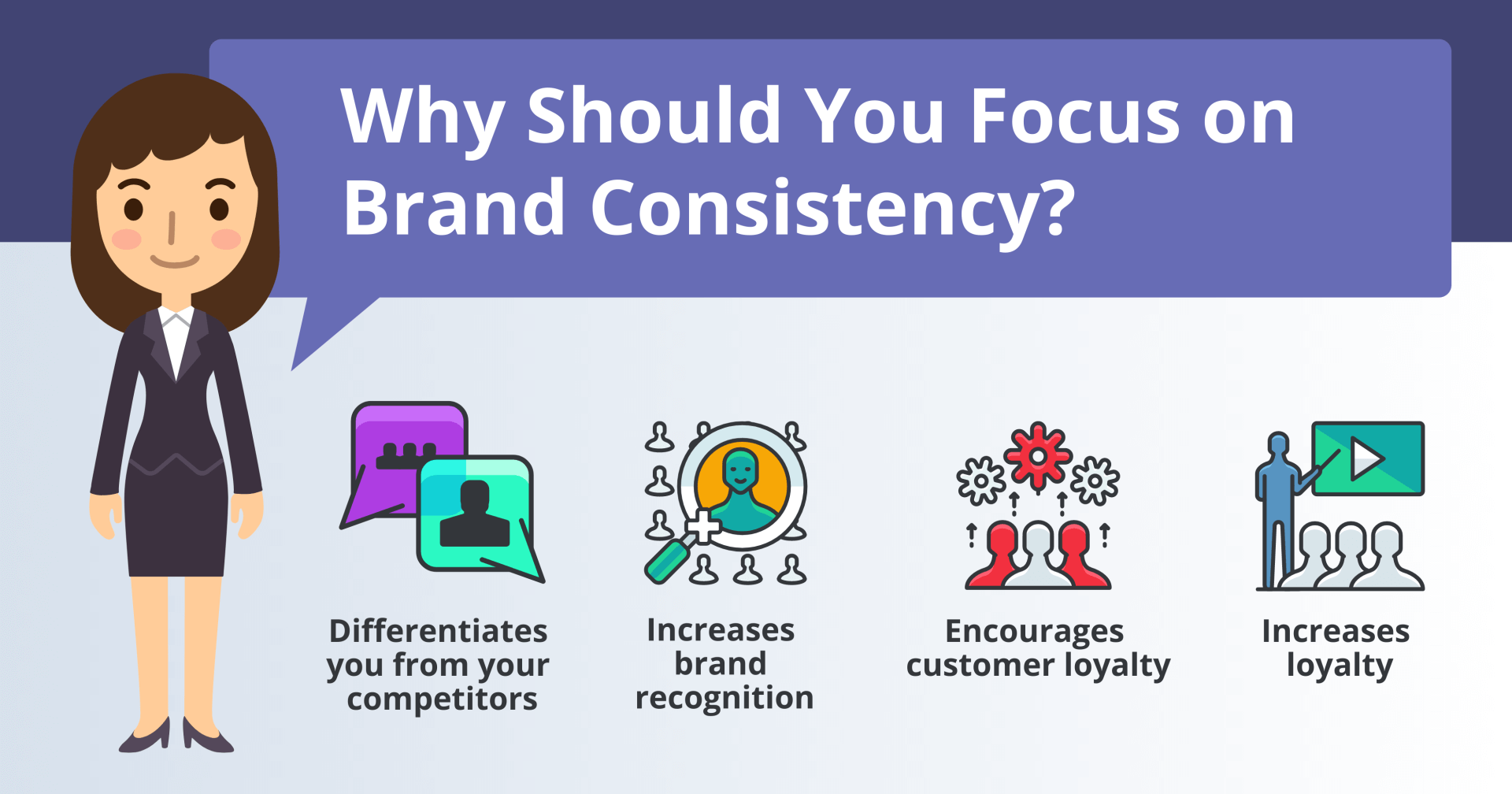There is a vast difference between social media consistency and constantly being on social media. It is unhealthy and not helpful to post too often.
When appropriately used, consistently posting relevant content, and connecting with your target audience will create an environment where you can interact and respond to an engaged customer.
Rather than focusing or obsessing over every social media post, measure to determine what your audience wants. Focus on building relationships.
To determine the optimum frequency, test different posting schedules to see which works best for your audience.
Your goal should be consistency and responsiveness to show your target that you are spending time on your page and that you will respond to them.
Keep in mind that people like to purchase from brands they know, like, and trust. Regular and consistent two-way communications on your social media pages help build trust and helps establish you as an authority.
Whether you are a small brand or a huge corporation, consistency matters because:
- Consistent branding differentiates you from your competitors
- It increases brand recognition
- Consumers are loyal when they know what to expect
- It gives a unique personality to your brand for potential customers to relate to and follow
Brand consistency is much more than your logo. It also includes aligned messaging across all social media platforms.
So, what should you do to ensure your social media branding is consistent?
1. Set Up and Follow Branding Guidelines
Also known as style guides, brand guidelines are a visual instruction manual that outlines a company’s tone, messaging, and voice.
Guidelines include the following brand identity elements, such as:
- Logos in different sizes and orientations to fit the varying allotted photo space for different social media platforms
- Typography such as font sizes, styles, and spacing
- Imagery including artwork, illustrations, and photos
- Primary and secondary colors from a color palette
- Tone and voice of how language is used, and emotions are evoked

All employees or outsourced freelancers need to follow the same brand guidelines to ensure consistent messaging everywhere, including social media.
You can start by performing a social media audit across all channel accounts. Make sure all bios, logos, banners, and handles are consistent with your brand guidelines.
Ensure that your content aligns with your brand’s look and feel and that you are posting on a consistent schedule.
For example, Starbucks consistently uses and follows its brand guidelines with their Starbucks Creative Expression site. It offers a high-level overview of how their brand comes to life.
Branding Guideline Example: Starbucks

Starbucks brand guidelines are outlined in their extensive online branding manual and cover the following six elements:
- Logos
- Color
- Voice
- Typography
- Illustrations
- Photography
The specificity of each brand element ensures maximum consistency. Let us look at the logos section. The face of Starbucks’ brand is Siren, and it is its most recognizable brand asset.
Starbucks prefers to use the Siren logo without the wordmark because it gives them flexibility and makes the Siren more prominent.
Below you can see the Siren logo on their primary social media channels. There is no mistaking she belongs to the Starbucks brand.
Consistent Logo Twitter Example: Starbucks

Consistent Logo Instagram Example: Starbucks

Consistent Logo Pinterest Example: Starbucks

Notice that each platform has different size requirements, but even on LinkedIn, we see the familiar logo and green color scheme:
Consistent Logo LinkedIn Example: Starbucks

The examples above show Starbucks’ use of their online branding manual ensures that every social media profile is immediately recognizable as theirs.
2. Use a Consistent Username on All Social Networks
You might think that your brand name is unique, and no one else will claim it. However, it is important to claim your username on at least all major platforms.

Rather than wait until you are ready to use a social network, reserve and create your profile with your brand name.
Use your bio to link to your website and to direct people to the social networks you use most often.
You can also get a branded domain to match your business name. Branded domains are best suited for well-known companies and when launching a product or business.
Established brands who purchase a branded domain make it easier for customers to find them online and prevent competitors from grabbing it.
Look at a branded domain as you would intellectual property that you would typically trademark. Getting a domain that matches is a good next step.
Cars.com is an example of a brand that uses their domain name as their company name.

Notice how they use their brand name and logo consistently across all major social media networks.
Consistent Username Twitter Example: Cars.com

Consistent Username Facebook Example: Cars.com

Just like Cars.com, you must choose one and only one username for your social media profiles. Even if you only had two, your customers would never remember which ones to use on which platform.
If it is too late, and your brand name is taken on social media, such as Twitter, you can try adding your location next to your brand name.
For example, if @yourbrandname is not available, try @yourbrandnameNY or @yourbrandnameUSA. These social media handles include your brand name so your followers will recognize you and will not be confused.
Need help with social media marketing for your business?
Book a free call to learn how our team of marketing experts can help you generate leads, boost traffic and drive MORE sales with social media.
3. Extend Your Consistency to Visual Branding with Color Palettes
Visual consistency in branding should not be overlooked. With the increasing focus on visuals in social media marketing, it is more important than ever to be consistent.
Take your cue from some of today’s most successful brands that are immediately identifiable by their color combinations alone.
Do you get hungry when you see the colors red and yellow together?
Smart brands understand the power of linking their identity to color combinations that invoke an association in consumers’ minds.
Visual Branding with Color Twitter Example: McDonald’s

Although color is critical, the perfect logo is recognizable even in black and white. McDonald’s logo is an excellent example of the perfect logo:

The same colors are usually incorporated into a brand’s logo, advertisements, and product packaging.
Visual Branding with Color Ad and Packaging Example: McDonald’s
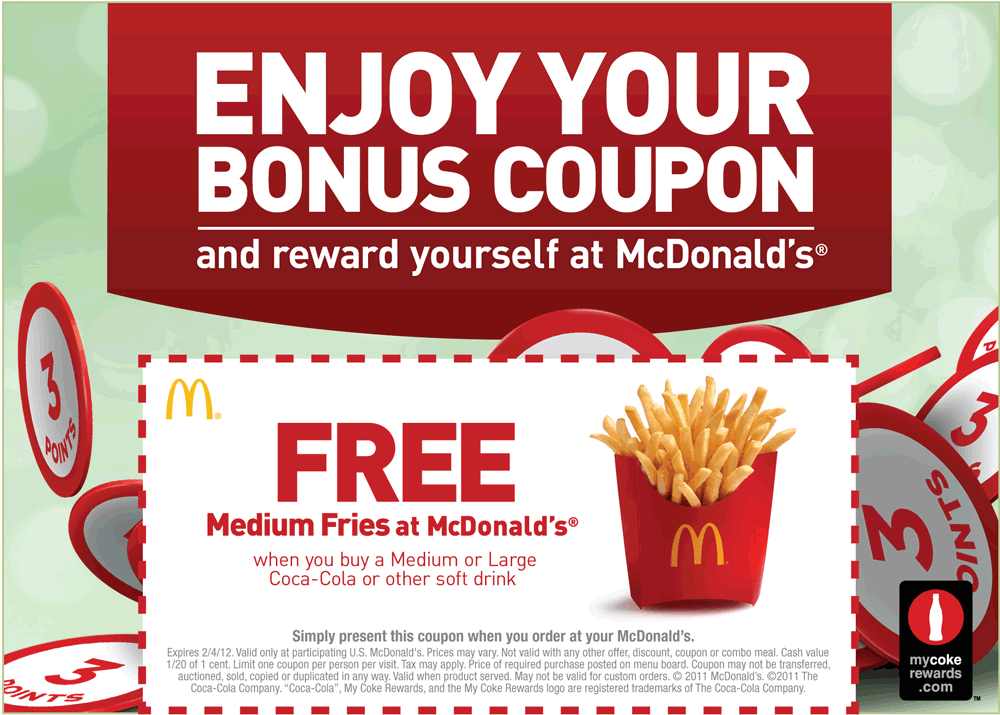
Brands do not need to stick to one or two colors. What is more important is creating a color palette made up of complementary colors and tones to maintain consistency. To illustrate this point, look at Oreo on Instagram.
Visual Branding with Color Palettes Example: Oreo

As you can see, Oreo uses many different colors. However, they are all within the same tone set and complement their primary colors.
How can you come up with your own brand’s color palette?
First, you should get some insights into the psychology of color and the emotions they evoke.
Once you have identified the colors and the feelings they bring out in people, you can use a color wheel tool to choose the colors and complementary tones that best suit your brand to create your color palette.
4. Establish a Posting Schedule Frequency
It is difficult to establish a relationship with followers if your social media posts are haphazard. To nurture a connection and build a relationship with your target audience, create a consistent posting schedule](https://blog.wishpond.com/post/115675436738/social-media-strategies).
Save time and be better organized by creating a social media calendar. Below is an example of Hootsuite’s internal social media calendar.
Posting Schedule Example: HootSuite
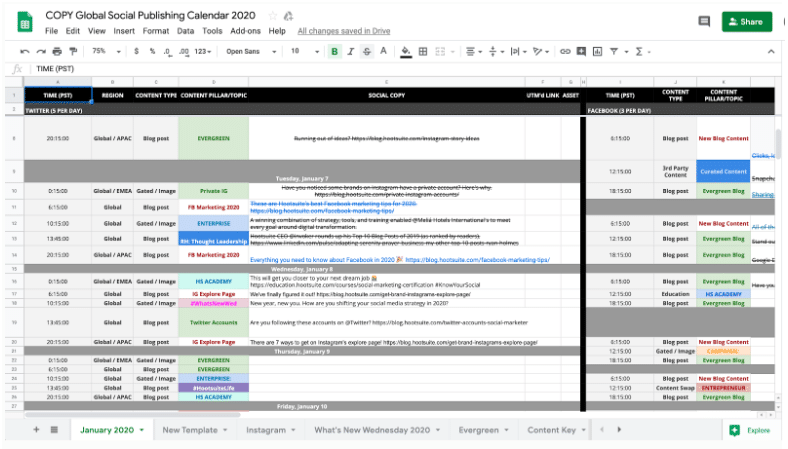
Hootsuite uses its own planner in addition to Google Sheets. Their planner is where the internal social media team puts finalized posts and their assets to prepare them for scheduling and posting.
Posting Schedule Example: HootSuite
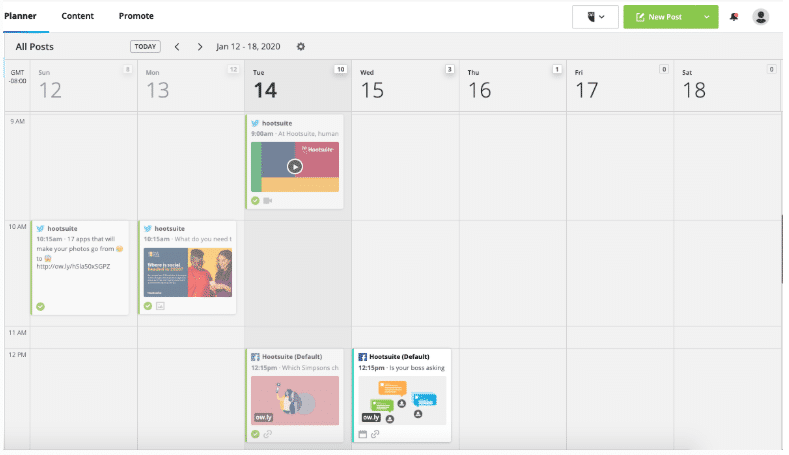
You can use Hootsuite’s editorial calendar and their social media calendar if you want a quick way to get started. Both are customizable to your needs. Just open the files and create your own copy.
If you post too infrequently, your audience might forget that you exist. Posting regularly will:
- Keep your brand top of mind when potential customers need your product or service
- Increase follower engagement because if you post at a similar day and time, your followers will know when to hear more from you and even anticipate your relevant and useful posts
- Gain favor from social media platforms’ algorithms as they reward sites that regularly and consistently post content on their platforms
Finding the right times to post on each social media platform is not an exact science. It depends on many factors, including the age of your target market, your industry, and time zones.
HowSociable, based on its own studies, suggests the following posting schedule for the major social media networks.

Creating a posting schedule can be an onerous task. Luckily, tons of tools on the market save you time and enable you to be more efficient while maintaining consistency.
Below are some of the free tools that also have premium plan options for more functionality:
- Buffer: 3 social channels, 10 scheduled posts, 1 user
- Planable.io: self-service, first 50 posts
- Commun.it: 1 Social profile, a 3-day limit on analytics, 3 monitored items & leads, ten weekly engagements limit
- Later: 1 social set, 30 posts per social profile, 1 user
- Hootsuite: 3 social profiles, 30 Scheduled Messages, 1 user
It is more important to create a realistic posting schedule of valuable content that you can stick to than trying to post more often than you can and sacrificing quality and consistency.
5. Make Your Blog Posts More Shareable with Engaging Social Media Images
If you are not sharing your blog posts, you are missing a powerful way to spread your message on social media.
Include an eye-catching graphic relevant and valuable to your content to grab your audience’s attention using one of the many online graphics tools.
You will need to create social media images that are the right size for whichever platform your readers choose to use.
Images that include the title of your blog post will get more attention. Each image needs to suit the social platform.
Although adding an image to your blog post is time-consuming, some platforms can help. For example, WordPress enables you to include a featured image that shows up when you share the post URL on social media platforms like Facebook.
Engaging Social Media Images Facebook Example: Wishpond

Landscape images work well for Facebook and Twitter. For WordPress users, set up Twitter cards using a plugin. The JM Twitter Cards, Social Warfare, and Yoast SEO plugins contain this functionality.
Pinterest recommends using images with a 2:3 aspect ratio that are taller than they are wide. To pin your blog post to Pinterest, include a portrait orientation image with your heading as a text overlay.
Engaging Social Media Images Pinterest Example: Wishpond

Both the Social Warfare and Yoast SEO plugins offer the ability to use separate images for Pinterest in WordPress dashboards.
As you can see above, social media posts are far more engaging when they contain a branded image. Visitors are more likely to share them.
Facebook users are more likely to remember and easily recognize your brand.
Focus on Your Customer Touchpoints
Most consumers maintain a presence across multiple platforms. And they spend a lot of time on social media.
Analyzing their touchpoints will enable you to post valuable content and appropriate responses to ensure brand consistency.
- The average adult is estimated to spend six years and eight months of their life on social media
- 49% of consumers have made impulse purchases after being targeted with personalized social media experiences
- The average Internet user maintains a social media presence on approximately eight platforms.
Below are several of the consumer and follower touchpoints you should analyze:
- Support team messages via email or live chat
- Who is reading your posts?
- Proactive responses or shares of your social media posts and tweets
- YouTube, Vimeo, or other video platform views
- Calls to your support team
- Comments on response threads
If you are a large brand with a dedicated social media team or a solopreneur, take the time you need to analyze where and how on social media your followers and customers are engaging with you.
Be consistent in how you react and respond to your target audience. Doing so will make a significant difference in how they perceive your brand.
It is not enough to follow the steps above and call it a day. Evaluate your efforts against measurable results.
For example, if you are posting 25 times a day and are not seeing engagement from your audience, try reducing the number of daily posts.
Perhaps you are annoying your followers and might see more significant results if you reduce how often you post.
Test varying actions to see which produce the best results. Optimum frequency varies significantly between social platforms.
Consistent Branding Pays Off Over Time
Keep in mind that it takes time to build brand recognition on social media. Successful, famous brands such as Nike and Coca-Cola have shown that consistency is key and is rewarded over time.
While Coca Cola’s marketing, advertising, and branding approaches have adapted to emerging trends, it has remained consistent with its red color, similar script font, simple taglines, and marketing images of happy people smiling.
Notice how recognizable the Coca Cola billboard below is from the 1930s.
Consistent Branding Over Time Example: Coca Cola
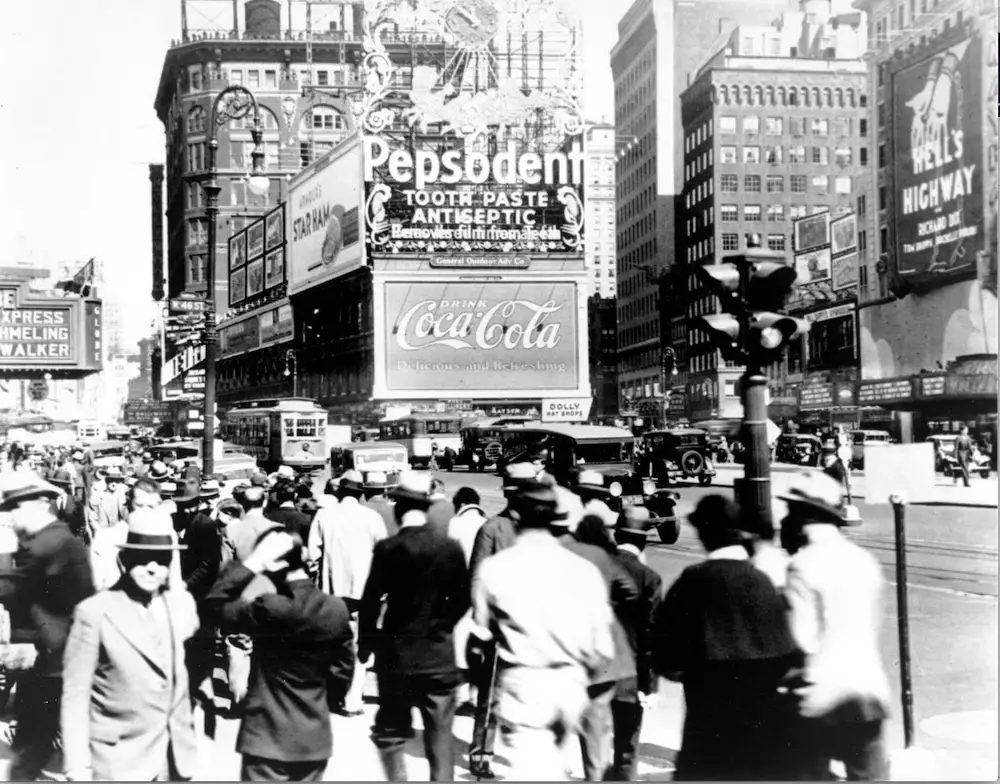
A neon Coca-Cola sign in New York’s Times Square in the 1930s. AP Photo or how about this Christmas ad from 1931?
See the happy and smiling Santa and the consistent font style we still recognize today.
Consistent Ad Branding Over Time Example: Coca Cola

The Coca-Cola Company 1931 ad
Although the products, packaging, messaging, marketing channels, and strategies have changed in Coca Cola’s more than 120 years in business, its consistency in color and font has remained remarkably similar. This is living proof of the power of consistency in branding.
Consistent Branding Over Time Pinterest Example: Coca Cola

Even though Coca Cola has been around for over 120 years, there is still consistency in their branding over time. Strive to accomplish the same for your brand.
Ready to Implement Consistent Social Media Branding?
For your audience to recognize your brand on social media, you must be consistent:
- Setting up branding guidelines
- Using the same social media handle
- Extending your consistency to visual branding using a color palette
- Establishing a posting schedule
- Including shareable social media images in your blog posts
- Focusing on customer touchpoints
Attention to these details will increase audience engagement and grow your business. With time, your brand will gain traction and become recognizable to your target audience. Be patient, and your consistent social media strategies will pay off.
About the Author

Julie works to grow small businesses, increasing their online visibility by leveraging the latest in Internet and video technologies. She specializes in creative camera-less animated video production, custom images, content writing, and SlideShare presentations. Julie also manages HubSpot CRM, blog management, email marketing, marketing automation, and social media for her clients.


